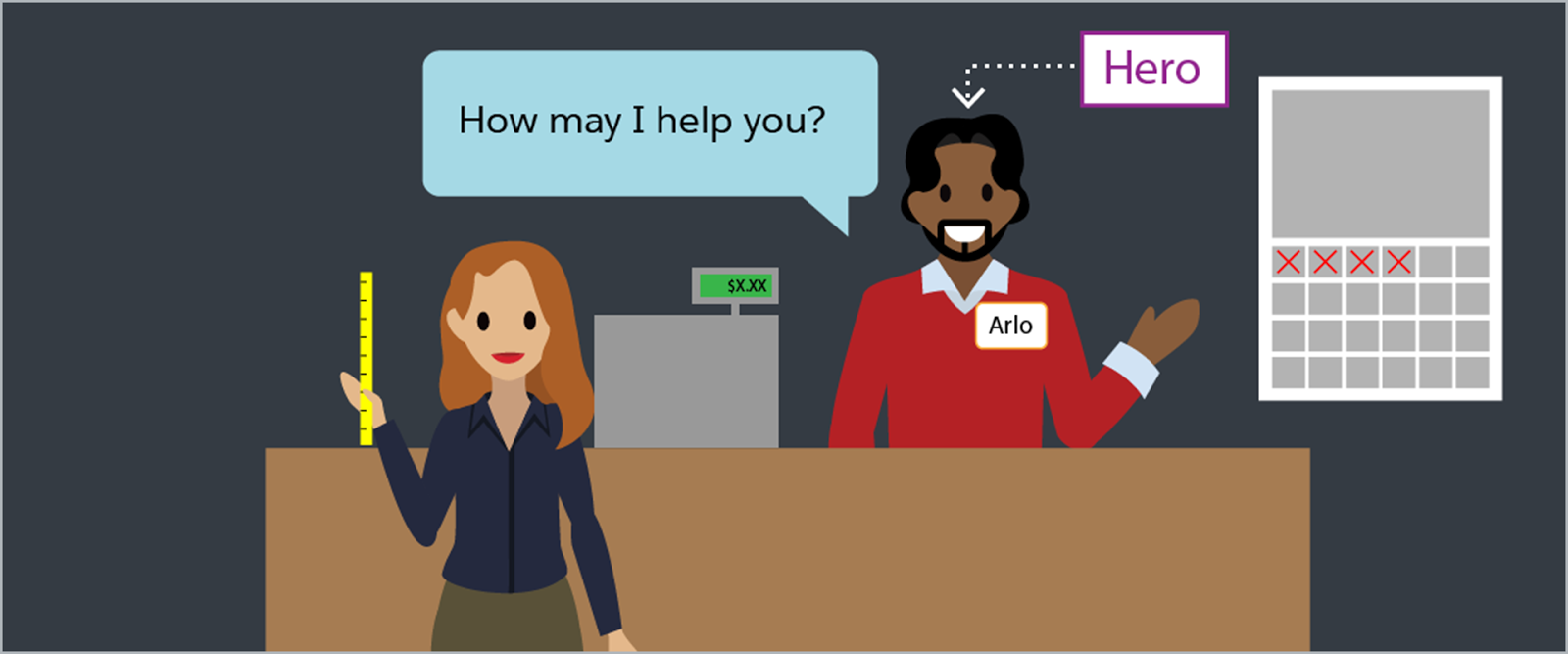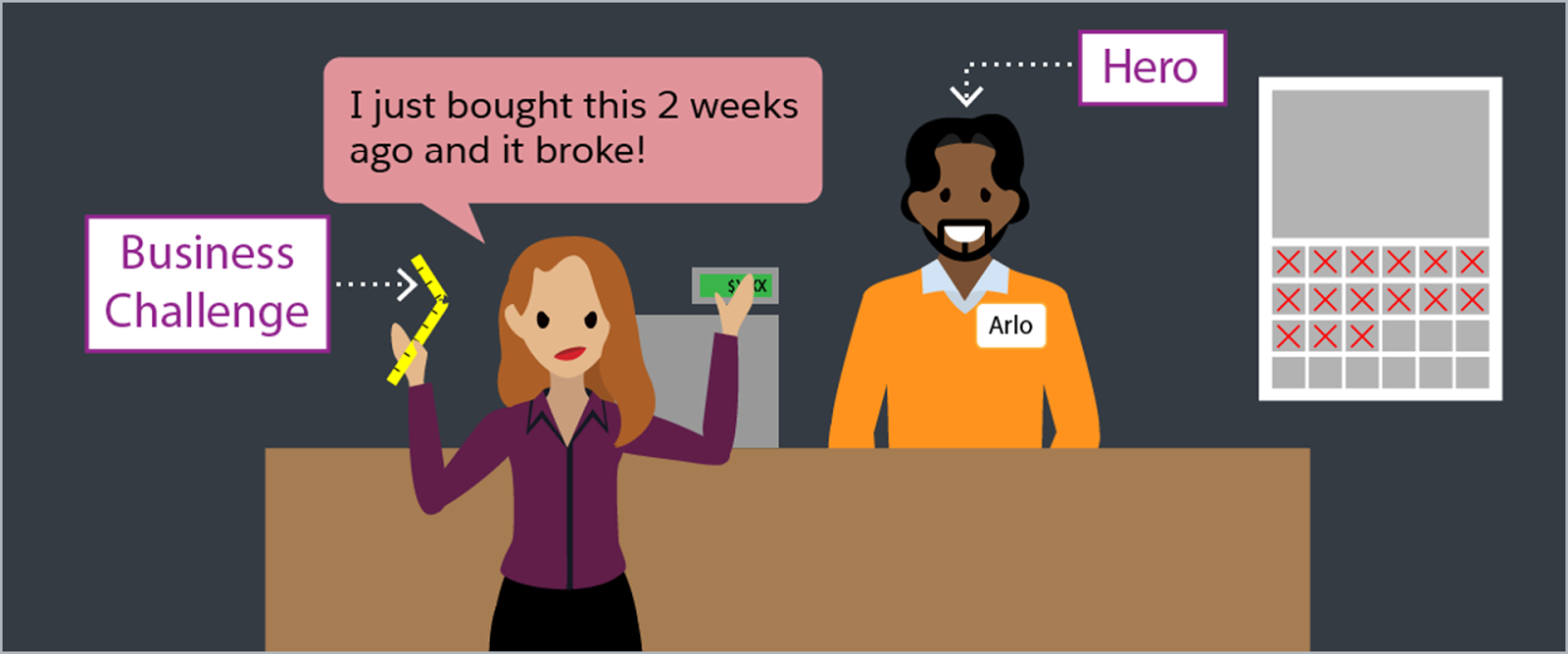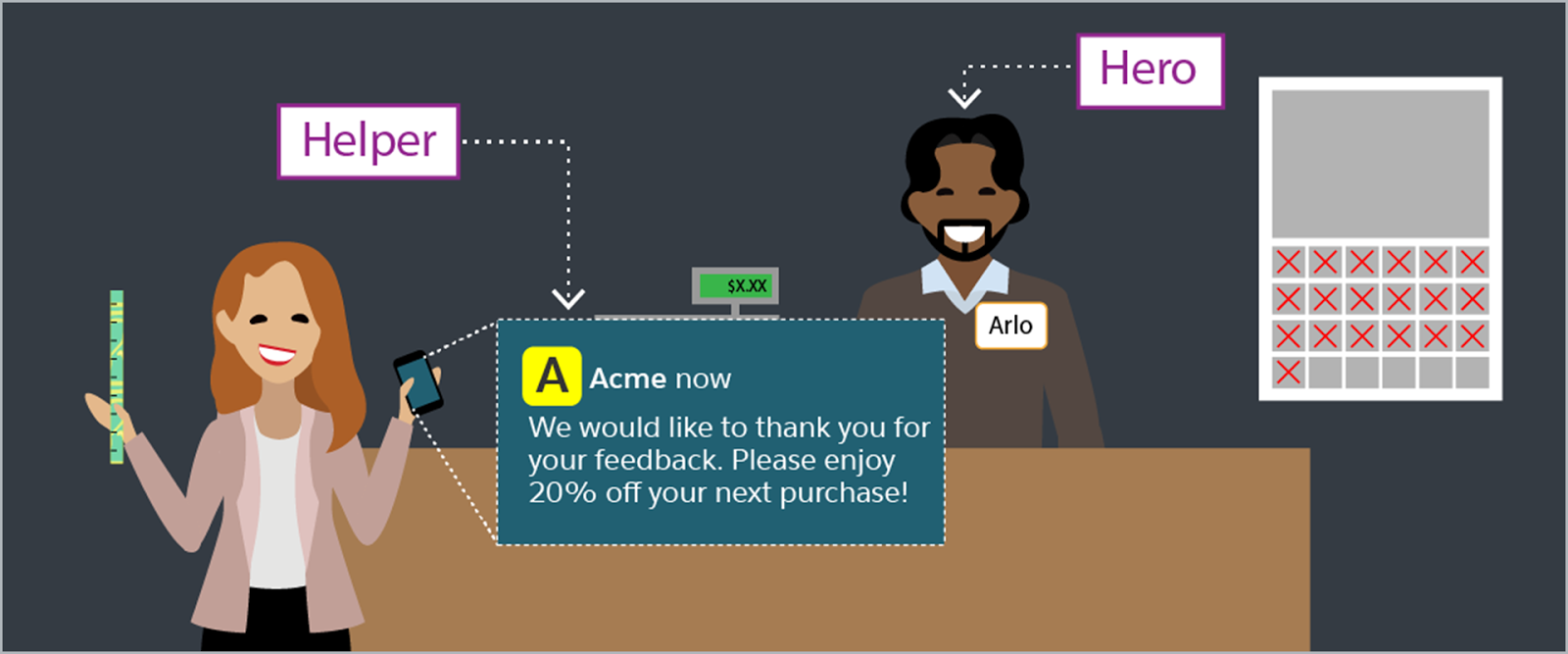Create Your Story
Learning Objectives
After completing this unit, you’ll be able to:
- Discover the value of storytelling.
- Explain why personas are used in demos.
- Describe the four components of a compelling story.
Spice Up Your Demo
Imagine sitting through a demo, complete with Google Slides, data, and a presenter who drones on and on about features and facts. You, along with many potential customers, begin to tune out and check your email. Don’t worry—we’ve all been there.
Now think of a demo that got your wheels turning. What engaged you?
- Did you see yourself as the user?
- Was there a relatable story?
The best presenters illustrate their thoughts using stories. Stories are easy for audiences to remember because they tap into emotions. And being moved can move you to change. Here at Salesforce, we’ve found that our demos are most effective when our customers are the focus of the story. In this module, we share some of the techniques we use to create demos that inspire action.
“People don’t really buy your product, solution, or idea—they buy the stories that are attached to it.” —Michael Margolis
Explore a New Life
One of the best ways to capture attention during your demo is to tell a story.
Personas—roles that are used to tell “day in the life” stories—work well because they make demos relatable to your audience. Your audience is made up of people. That can sound obvious, but it’s important to keep in mind. People have goals, challenges, desires, and frustrations. Take extra time to create a persona that includes these attributes. If your persona lacks these elements, your demo story loses emotional impact and makes your audience ask, “Do I care?”
Take Cindy Central as an example. She is a field sales rep persona we often use in Salesforce demos to show how great and easy Salesforce is to use. Cindy is responsible for developing and closing deals in her territory, and she has a big number to close this quarter.
Imagine Cindy going through her typical workday.
- She’s frustrated because all of her data is located in unorganized spreadsheets.
- She has dozens of sticky notes on her desk.
- She can’t keep track of her meetings.
Every minute she isn’t selling puts her further from her sales goal, and she has to make her number.
What does Salesforce do to help? Salesforce organizes her data and helps her schedule meetings.

We use Cindy to explain how businesses succeed using Salesforce to address everyday challenges. People relate to people, so using Cindy as an example creates an emotional connection between her experiences and our customer’s challenges.
Take advantage of personas, and think about using multiple ones to showcase different roles and customer-employee interactions. Now, your business is likely different from Salesforce’s business. What personas would you define based on your organization and your customers and partners?
Win Over Any Audience
There are many ways to tell a story, and you don't need to be a published author to be a good storyteller. People have been telling stories for tens of thousands of years, and our experience shows that the best stories have four key elements.
|
Story Element
|
Description of the Story Element
|
Questions That Help You Identify the Element
|
| Hero |
A strong character—someone with their own goals and motivations—who helps your audience connect what you show in your demo with their real-world experience. Heroes may not start out heroic, but they get there by journey’s end. |
|
| Challenge |
A hurdle that makes it difficult for your heroes to succeed on their journeys. |
|
| Helper |
Someone or something that helps heroes conquer their challenges. |
|
| Victory |
That sweet, wonderful place that makes all your customer’s struggles and challenges worth it. |
|
Make Your Customer Shine
Every story needs at least one main character—a hero. In The Wonderful Wizard of Oz, the main character Dorothy is relatable because her journey reminds us of our childhoods, when the world was filled with wonder and challenge.
So ask yourself: “Who is the hero of your story?” Perhaps you’re tempted to yell, “My products!” While your products or services are fantastic, avoid positioning your products or services as your sole focus or hero. Position your customers as the heroes transforming their businesses. Your audience’s journey is more relevant and compelling.
How does this work? Let’s say you’re a Salesforce solution engineer preparing for an upcoming customer demo with Maisie Summers, the owner of a local business. Maisie is interested in improving customer satisfaction, so you create two relatable characters—a store manager (your hero) named Arlo Wilson and a customer. These characters tackle similar challenges your customer and their customers face.

Find Your Customer’s Hurdle
It’s important to recognize and weave your audience’s challenges into your story. What will they relate to on a human level?
- Is a poor-quality pipeline causing salespeople to miss their numbers and putting their jobs at risk?
- Is a service agent receiving abnormally low customer satisfaction scores?
- Is lack of insight into customer behavior confounding a marketer?
Challenges with personal impact matter on an emotional level to audiences and are far more powerful than general statements.
For example, Dorothy's main challenge is finding her way home from the strange and dangerous world of Oz. In your case, Arlo’s daunting journey doesn’t include overcoming witches, flying monkeys, or deadly poppies. Instead, through discovery, you find that Arlo faces challenges, such as dropping customer satisfaction because of product failure after purchase.
Now that is some scary stuff.

We Are Better Together, After All
Stories usually have hero-helper relationships. In The Wonderful Wizard of Oz, Scarecrow, Lion, and Tin Man are all helpers, catalysts who help Dorothy mature and achieve her goal of getting home.
Guess who the helper should be in your demos? If you guessed “your products or services” (Salesforce, in our examples), you’re on your way home!
The value of your products doesn’t just rely on bells, whistles, and cool new features. The biggest factor in your customers’ buying decisions is how your products and features help them through their challenges. Most of the time, your customer is looking for a product that makes problems disappear, and for you to deliver it.
Compare these two statements, for example.
- Here we have a Marketing Cloud Engagement journey that can send Arlo's customers emails, text messages, and push notifications.
- Using tailored marketing journeys, Arlo sends his customers customized messages over any channel they prefer. This guarantees his marketing campaigns are as meaningful as possible. This is also how our Marketing Cloud Engagement product empowers users.
See the difference? The first statement is weak, whereas the second is a strong helper statement that delivers value. Customers care more about business outcomes than they do about features.
So in your demo, show your customers how your product features keep Arlo’s customers happy and coming back for more.

Arlo sends his customer a text message, thanking her for her feedback and offering a discount on her next purchase. That awesome text message made his customer’s day and even turned her frustrations into a positive customer service experience.
Create a Lasting Victory
By the end of The Wonderful Wizard of Oz, you find yourself cheering for Dorothy to find her way home. In your demo, share Arlo's victory with your audience in two parts.
- Finish Line: Tangible outcomes, such as results, costs saved, or time reduced.
- Lesson Learned: Emotional change in your customer.
It’s important to describe these tangible outcomes as lasting, long-term benefits, such as deepened connections between employees or between employees and their customers.
In your demo, highlight how your products and services have the power to create a more consistent customer experience that leads to happy customers buying more and buying more often.
Inspire Positive Change
Your hero’s journey from start to end is what we call the From-To Shift. It's the growth and change your hero experiences on their quest to reach their goal. And in demos, it’s important to leave on the high note of transformation. This transformation inspires your customers to give you a chance at solving their business challenges.
In the context of demoing, the From-To Shift describes how emotionally relevant and meaningful your story is for your audience. The greater the change, the more impactful the story.
For example, Dorothy begins her journey unsure of her future and abilities (From), only to complete her story as a confident and strong individual (To). In your journey with Maisie:
- From: Arlo begins his adventure disconnected from his customers.
- To: Arlo completes his story as a connected and responsive store manager who is able to provide increased customer satisfaction, while increasing the company’s revenue